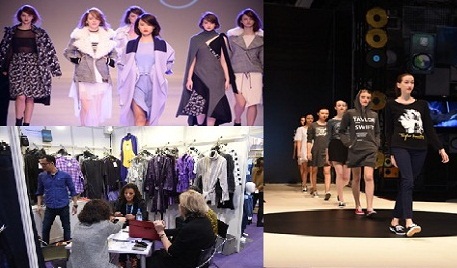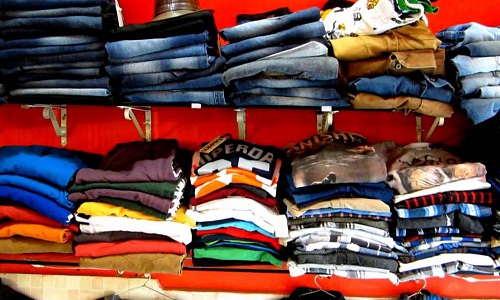FW
In order to bridge the gap between production and consumption of raw cotton, Pakistan will have to foot a bill of around $1.58 billion for import of 4.5 million bales (170 kg each). In 2015-16, cotton production clocked up to 15 m bales in 2014-15 and 9.5 m bales. It is expected to be around 10.54 m bales in 2016-17.
Though Pakistan is the third largest raw cotton exporter it has been an importer for the last two years. Last year, the country imported around 2.7m bales from India at a cost of $800 m. The country has also lost its fourth position in the world in terms of the production of raw cotton. There was a time when Pakistan was the largest exporter of cotton yarn globally, says Asif Inam, Chairman of the All Pakistan Textile Mills Association (APTMA) for the Sindh-Balochistan zone.
About two months ago, cotton prices in India were low owing to higher cotton production estimates, Inam says. But prices have moved up substantially now, making the import of cotton from across the board costly, he added. In the beginning of the cotton season in India in October, prices were as low as Rs 35,000 per candy (356kg). More recently, the prices soared to Rs 50,000 per candy due to the intervention of the Cotton Corporation of India (CCI).
Highlighting the challenges being faced by millers in Pakistan, the textile industry has come up with a set of recommendations for its revival with the help of a growth-led strategy as exports have consistently weakened over time. All Pakistan Textile Mills Association (APTMA) chairman Aamir Fayyaz outlined the proposals at a meeting with Trade Development Authority of Pakistan (TDAP) chairman SM Muneer. They discussed restoration of the viability and growth of the textile industry.
Fayyaz pointed out the exports had slid because of high cost of doing business. In the previous fiscal, trade deficit reached $28 billion as exports dropped to $19.5 billion from $24.5 billion in 2013. He suggested the government should remove customs duty on import of cotton, allow duty-free import of all man-made fibres that were not being manufactured in the country and permit the drawback of taxes and levies at 4 per cent on export of yarn and grey fabric, 5 per cent on processed fabric and 6 per cent on home textiles, made-ups and garments.
He said the government should allow long-term financing facility, input tax refund on packaging materials under the zero-rated regime and lift the moratorium on new gas/re-gasified liquefied natural gas (LNG) connections for captive power plants. He proposed that a multi-year tariff, determined by the National Electric Power Regulatory Authority (Nepra) for the industry, should be notified without including the surcharge, which would make available electricity at the regionally competitive price of Rs7 per kilowatt-hour.
Revealing that $3.5 billion worth of industry capacity was shut, he emphasised the need for bringing that capacity back to production as well as restoration of investor confidence in order to encourage them to execute their investment plans. Speaking on the occasion, the TDAP chairman said exports should always be the top-most priority of the government for instilling confidence in the entrepreneurs.
The Maharashtra government has decided to set up a Rs 300 crore garment park in Solapur to promote the city as a 'major garment hub'. Nearly 27 acres of land belonging to the erstwhile Narsing Girji Mill in Solapur has been identified, says state textile minister Subhash Deshmukh.
The minister was inaugurating the three-day international exhibition on uniform and textiles in Solapur. The exhibition is being hosted by Shree Solapur Readymade Garment Manufacturing Association in co-ordination with the Maharashtra Textile Ministry and Mafatlal Fabrics. The bhoomi pujan (ground breaking ceremony) of the park would be held on January 26. The government will provide all required infrastructure to successfully complete and launch this Garment Park.
Amit Kumar Jain of Shri Solapur Readymade Kapad Utpadak Sangh said the total cost for the garment park would be around Rs 300 crores. The park will generate enough employment potential which will provide employment to over 60,000 bidi workers, besides other unemployed persons.
The uniforms industry including school, corporate wear and government forces is worth over Rs 18,000 crore of which nearly Rs 10,000 crore is in the organised sector. Of the rest, Solapur contributes nearly Rs 1,100 crore with uniforms churned out from around 1,000 plus manufacturing units in the city employing over 60,000 skilled workers.
The winter edition of Ethical Fashion Show will be held in Berlin from January 17-19. Bernhard Felmberg of the Federal Ministry for Economic Cooperation and Development will be among the speakers where he will provide an update on the work of the German Partnership for Sustainable Textiles.
Highlights of the trade fair are: two fashion shows, 'Salonshow' and 'Ethical Fashion on Stage' as well as presentations, panel discussions and press tours. The fashion show will be presented in a new location, the Energie forum by the River Spree.
At the Salonshow on January 18, collections will be from a range of eco fashion labels including Austriandesign.at, Biaggi, Blue Valley, Inti Ferreira, Johanna Riplinger, Lanius, Lanius X Kunert, Royal Blush, Somyso, Studio Elsien Gringhuis, Studio Jux and Xess+Baba. Later that day, the 'Ethical Fashion on Stage' show will present looks by B Frog, C. Pauli, Chapati, Colombo3, Elementum, Greenbomb, Jaspe, Komodo, Naturaline, Organication, Shirts for Life, Tranquillo and Ukua Lov Baby. To finish the show, lavera Naturkosmetik will present the winner of the lavera Green Fashion award.
The HC has approved the amalgamation of Balkrishna Synthetics with Siyaram Silk Mills. Balkrishna Textiles was established in 1979 has over the years earned reputation as textile processors in the domestic and overseas markets. The company currently exports its product range made up of textiles and home textiles to the EU countries, US, CIS and exports fabrics to Indonesia, Malaysia, Middle East and Gulf countries. The company is into dyed and printed cotton fabrics and polyester fabrics, scarves, bottom weights, shirtings and corduroy fabrics, coated fabrics and value adds.
Siyaram, incorporated in 1978 and based in Mumbai, is a maker of blended fabrics and is a garment manufacturer, with an associated chain of retail outlets and branded showrooms. With a rich legacy of over 30 years, its bespoke men’s wear fashion is synonymous with high quality, continuous innovation and iconic futuristic designs which are local at heart and international in appeal.
Siyaram is India’s largest producer of blended high fashion suiting /shirting fabrics, manufacturing over 60 million meters of fabric annually. It has state-of-the-art manufacturing plants at Tarapur, Daman and Silvassa. An integrated distribution network, with over 0.1 million retail footprints across the country, makes high octane fashion accessible to the masses and the classes.
"The Hong Kong Trade Development Council (HKTDC) will launch this style show from Jan. 16-19at the Hong Kong Convention and Exhibition Centre. Marking its 48th anniversary, Hong KongFashion Week will feature approximately 1,500 international exhibitors focused on athleisure and trendy informal clothing."

For a seamless sourcing experience, the fair will be separated into 20 thematic zones for visiting buyers. The thematic zones will be divided by different categories, including the first-time appearances of Fashionable Sportswear and Casual Wear areas.
The Fashionable Sportswear zone would reflect the global affinity for fitness-oriented clothing. As wellness has become a worldwide trend, especially in the apparel market and athleisure has gained momentum in key fashion hubs such as Hong Kong. According to Euromonitor, the Chinese sportswear market has expanded by 11.3% year-on-year to $23,950,705,350 in 2015. HKTDC added the Fashionable Sportswear zone to incorporate the latest sports styles and provide business opportunities for buyers in the athleisure sector.

Casualwear has also become a popular trend in China, as the nation’s millennial dress more informally. Many Chinese and global brands are focusing on selling casualwear with trendy elements and fast turnaround times. The Casual Wear zone will be established for buyers that are interested in this relaxed apparel trend.
Other zones at Hong Kong Fashion Week include Thermal Clothing for cold-weather garments, clothing accessories for buyers interested in apparel embellishment, Men In Style, Fabric & Yarn, Knitwear and the International Fashion Designers’ Showcase.
Meet industry players and gather market intelligence at exciting events
The fair promises an exciting event line-up of fashion shows and parades, including the Brand Collections’ Show, Designers’ Collection Shows and the FASHIONALLY COLLECTION show which showcases the creative talents of the local new design forces. Experts from international trend forecasting agencies and industry professionals are invited to unveil the latest fashion trends and share updated market information at seminars and forums. Networking receptions will also be held to help participants expand their network of contacts and gather the latest market intelligence.
"Bangladesh's RMG exports to the global market rose by over 9 per cent to over $26 billion from Jan-Nov 2016. This growth rate is not sufficient to attain the $50 billion export target by 2021 as the sector needs over 12 per cent growth to realise the vision. Experts attributed remediation process, which helped improve safety standards-to the increased production capacity. Upon completion of remediation, some RMG units have received more orders from buyers who were satisfied with the safety progress, they argued."

Bangladesh's RMG exports to the global market rose by over 9 per cent to over $26 billion from Jan-Nov 2016. This growth rate is not sufficient to attain the $50 billion export target by 2021 as the sector needs over 12 per cent growth to realise the vision. Experts attributed remediation process, which helped improve safety standards-to the increased production capacity. Upon completion of remediation, some RMG units have received more orders from buyers who were satisfied with the safety progress, they argued.
As per World Trade Organisation (WTO), the global clothing export market has contracted by around 7.8 per cent to $445 billion in 2015. In 2014, the global apparel export was $483 billion while the global RMG export market is expected to reach $650 billion by 2021.
Production to get a boost

According to the data of Export Promotion Bureau (EPB), during January-November 2016, Bangladesh earned $26.09 billion, exporting clothing products, which is 9.03 per cent higher compared to $23.93 billion a year ago. Knitwear products fetched $12.56 billion with an 8.22 per cent rise compared to $11.60 billion in the previous year while woven products earned $13.53 billion, which is 9.78 per cent higher compared to $12.32 billion a year ago.
Exporters Association of Bangladesh President Abdus Salam Murshedy expects a double digit growth as the production capacity as well as the volume of work orders have increased because of safety improvement and remediation completion in most factories. Last year production was hampered due to the ongoing remediation to improve safety standard in workplaces for ensuring workers' safety. After the full-fledged completion of Corrective Action Plans (CAPs), the work order flow would increase and it would be possible to attain a double-digit growth, added the business leader.
According to Mahmud Hasan Khan Babu, VP, BGMEA, the sector has seen less investment as manufacturers had to spend a lot on remediation and safety improvement. Experts feel that in order to expand, RMG sector requires investment to increase production capacity for gaining more global market share. Gas connection is a big challenge for Bangladesh's RMG. The country has to work on technology up-gradation and high-end products. Bangladesh has to now focus on capacity building and set strategies to move to high-end and branded fashion segments. Currently, about 79 per cent of Bangladesh export items are concentrated in five basic products – trouser, t-shirt, sweater, shirts and jackets mostly made of cotton.
Another priority area is market diversification as Bangladesh's apparel exports are mostly concentrated on EU and North America. Non-traditional market is the key element to enlarge the export volume. The contribution of non-traditional markets to total export was 2 per cent in FY2005-06, which has increased to 15 per cent in FY'16.
The 2017 spring edition of Yarn Expo will be held from March 15 to 17 at the National Exhibition and Convention Center (Shanghai). Over years, the Expo has increased in stature in the global yarn and fibre market and is expected to feature more exhibitors in its next edition.
Its scale is expected to jump by 20 per cent and will occupy 18,000 sq. m. compared to 15,000 sq. m. in 2016 to accommodate the increase in exhibitors. Nearly 360 exhibitors will bring together some of the world’s highest quality yarn and fibre products such as natural and blended yarns including cotton, wool, flax / regenerated flax, silk, and man-made fibres and yarns as well as specialty products including elastic and fancy and blended yarns.
Last year’s Yarn Expo Spring edition attracted 20,527 buyers from 77 countries and regions creating an unrivalled platform for exhibitors to reach all kinds of buyers from around the world. To take advantage of this diverse buyer profile, a number of international suppliers have already confirmed their participation this year. After the rewarding results in last autumn fair, Birla Planet will return to present a series of Birla Spunshades, Birla Micro-Viscose and Birla Micro Modal products.
Furthermore, the Cotton Textile Export Promotion Council (TEXPROCIL) will once again organise the Indian Pavilion to feature India’s top cotton yarn and fibre suppliers. Besides the India Pavilion, Pakistan Zone will return as well and so will exhibitors from Uzbekistan and Vietnam who will also showcase competitive cotton yarns, elastic yarns and eco products to diversify the sourcing options for buyers. Meanwhile, a wide range of high quality synthetic, knitting and metallic yarns will be brought by exhibitors from Indonesia, Korea, Singapore, Slovakia and Thailand to cater to the rapidly growing demand for these products in the global market.
LIVA, a leading fashion fabric brand from Aditya Birla has launched its first and India’s only state of the art studio exclusively for their LIVA Accredited Partner Forum (LAPF) partners at Noida. LIVA Accredited Partner Forum (LAPF) is the first of its kind platform in the textile fraternity that connects and builds a network of textile professionals.
The LAPF studio harnesses the strength of one of the largest garment clusters in the world where over 650 garment units are located. It will act as a one-stop customer experience centre for technical, product and marketing solutions. The studio offers more than 1,000 fabrics of Viscose, Modal & Excel on display with detailed technical specifications along with wide variety of fabrics including woven, knitted, flat knitted etc. Also on display would be LIVA’s seasonal collection specially designed by its in-house designers.
The launch was attended by Rajeev Gopal, Chief Marketing Officer, Birla Cellulose and Birla Cellulose team from across India and Lalit Thukral, President Noida Apparel Export Cluster (NAEC). Well-known fashion designer Narendra Kumar and celebrity jewellery designer Riddhima Kapoor Sahni marked their presence and added fashion quotient to the event and inaugurated the Studio in Noida.
Talking about the features of LAPF studio, Rajeev Gopal, CMO, Grasim said the LAPF studio will act as an enabler for the company’s value chain partners for which they were happy to associate with the Noida garment cluster. This is a key source to clothing brands across the world.
LAPF studio connects with over 650 garment manufacturers & exporters over 50 local & international brands, 50 international buying houses, agents and traders, 100 fashion design houses. Brand Liva’s journey of collaboration with the entire value chain of textile industry is taking firm roots with such initiatives.
The West Bengal Garment Manufacturers and Dealers Association (WBGMDA) is hosting a three-day textile fair in Kolkata. The fair that started from today (January 5) will go on to January 7. Vijay Kariwala, VP of WBGMDA informed that the fair would have 102 participants who make for more than 300 brands in total. The fair will witness the presence of kids wear players mainly owing to the fact Kolkata is known as the hub for the garment industry. Over 500 wholesalers from different parts of the country have confirmed their presence in the fair.
“The event is a core B2B fair where the organizers are expecting big retailers, prominent wholesalers, distributors and agents on a pan-India basis. In the three days, the organizers are anticipating about 1,500 visitors from Delhi, Mumbai, Lucknow, Amravati, Indore, Patna, Assam etc.
This is one of the best platforms for buyers, retailers and wholesalers in the region. It is organised on a pan-India level to offer opportunities to stakeholders. The popularity of the fair has been increasing and a good deal of business is expected this time.












